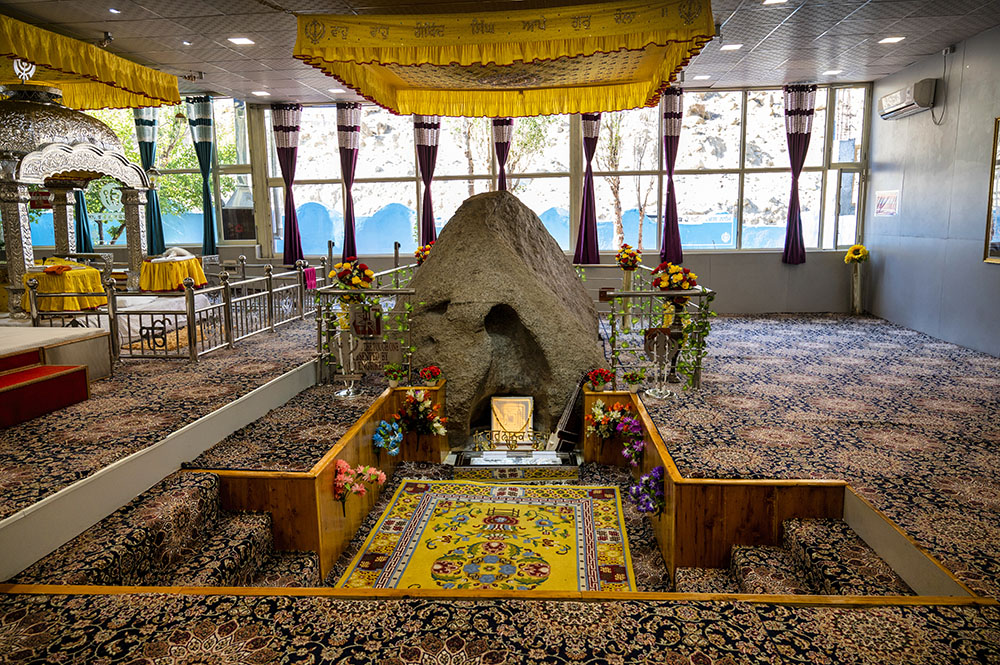

The enchanting region of Ladakh, nestled in the northernmost part of India, has been a place of spiritual pilgrimage and tourism for many years. Ladakh's tourism history is steeped in its topographical wonders, ancient culture, and religious heritage. Among its numerous sacred shrines, the Pathar Sahib Gurudwara holds a special place in the hearts of visitors and locals alike.
Ladakh, often referred to as "Little Tibet," has been captivating travelers with its surreal landscape and vibrant cultural tableau for over a century. However, it was only in the 1970s that Ladakh was opened to international tourists. Since then, eco-tourism, adventure tourism, and cultural tourism have flourished in the region, drawing visitors from all over the globe.
The Indian army has maintained Pathar Sahib Gurudwara since its inception and it stands as a beacon of the Sikh faith's high regard for nature and the divine. Situated amidst the lofty mountains at an altitude of about 12,000 feet above sea level, this landmark embodies the essence of religious harmony and respect for all religions, a philosophy deeply rooted in the culture of Ladakh.
The foundation of the Gurudwara is entwined with the legends of Guru Nanak Dev ji, the founder of Sikhism. It is believed that during his sojourn in the Himalayas in the 16th century, Guru Nanak Dev ji meditated on this very site. According to the local legend, a demon pushed a large boulder to crush the meditating Guru Nanak Dev ji, but the boulder turned soft upon touching him and thus, he was unharmed. The boulder with the imprint of the Guru's back is preserved within the Gurudwara and has been a source of reverence for Sikh pilgrims and other visitors.
Not far from the Pathar Sahib Gurudwara lies Alchi Monastery, one of the oldest monasteries in Ladakh dating back to the 11th century. Alchi is renowned for its vibrant frescoes and exquisite artworks that represent the zenith of Buddhist Himalayan art. Tourists flock to Alchi to witness its historical murals, wood carvings, and statues, which are exceptional in their details and historical significance.
In recent years, sustainable tourism has gained momentum in Ladakh. The government, along with local communities and NGOs, is working to ensure that tourism development does not compromise the fragile high-altitude ecosystem. Eco-friendly homestays, conservation of indigenous wildlife, and the promotion of local culture are parts of this initiative.
Adventure tourism also sees a surge with activities like trekking, mountain biking, and river rafting becoming increasingly popular. Ladakh's rich calendar of Buddhist festivals adds to the allure, allowing tourists to experience the spiritual and cultural tapestry of the region.
Despite the harsh climate and remote location, the spirit of Ladakh draws visitors back time and again. The Pathar Sahib Gurudwara and Alchi are just two of the many treasures to be discovered in this far-flung corner of India, where history and spirituality intermingle with the awe-inspiring natural backdrop.
As tourism evolves, Ladakh continues to embody a unique confluence of environmental consciousness and deep-rooted spiritual ethos, making it an incomparable destination for those seeking to enrich their travel experience with meaning and mindful exploration.